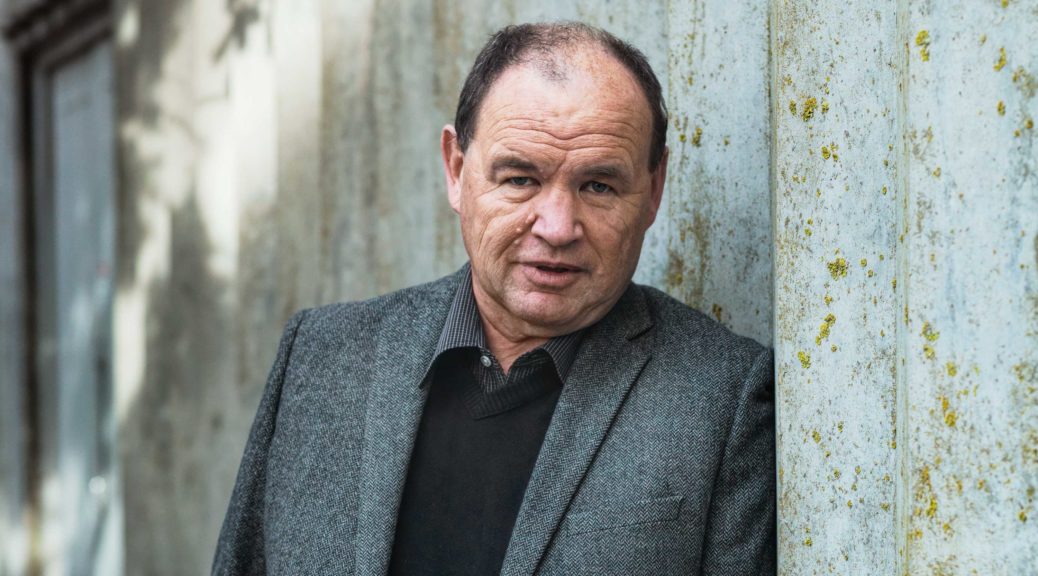ASSOCIATE PROFESSOR SPENCER LILLEY
Te Ātiawa, Muaūpoko, Ngāpuhi
Te Pūtahi-a-Toi School of Māori Knowledge
Originally a librarian, Associate Professor Spencer Lilley from Te Pūtahi-a-Toi School of Māori Knowledge has long been committed to finding effective ways to provide information services and resources for Māori users. ‘I developed a strong understanding about what Māori information needs were and the types of resources that were required to help them satisfy those needs, as well as ways of delivering those resources in a manner that met with their expectations and acknowledged the different ways that they would have in approaching information and knowledge,’ he said.
When working in the Massey library, Associate Professor Lilley discovered that many Māori students did not have extensive experience in using libraries. ‘They’d left school many years ago, possibly not with many qualifications, and coming into university as adults they had to use the library’s resources to help them learn,’ he said. ‘I found that they were facing a lot of the same questions that I had faced when I was leaving school, in that they didn’t know about finding information that would help them to make decisions.’
While still a librarian, Associate Professor Lilley conducted his PhD, looking at how Māori secondary school students seek information to help them with academic and cultural success, and finding ways to help them to develop information literacy skills at secondary school, so that by the time they got to university they would have the information-seeking skills they needed.
Today, Associate Professor Lilley is still focused on libraries, now investigating the indigenisation of the library and information profession. ‘I’ve focused on a number of different ways that the current structures can be further made receptive or responsive to Māori needs,’ he said. ‘I’ve looked at how Māori resources and library catalogue items are organised so that people can access them through databases. I’ve also looked at how collections can be shaped to meet the needs of Māori, and how the library and information science curriculum can be indigenised to ensure that those attending institutions and studying for qualifications are exposed to the needs and resources of indigenous groups. It’s about knowing how indigenous knowledge is organised and the different needs of indigenous peoples.’
Associate Professor Lilley is careful to draw the distinction between indigenisation and decolonisation in his work. ‘The terms are sometimes used interchangeably, but I deliberately focus on the word indigenisation because one of the rationales from my perspective is that libraries and archives are colonial constructs, so it’s very hard to decolonise something that was always colonial. It’s better to initiate changes in that colonial structure through indigenisation than to try and decolonise something that was a colonial introduction in the first place. I’m one of a handful of people in the library and information research community who are working on those sorts of issues.’
Currently, Associate Professor Lilley is looking at how galleries, libraries, archives and museums are assisting to revitalise te reo. This includes looking at institutions’ policies, the types of activities they do, how they organise and display their resources, and what information they display with these. ‘For example, in an art gallery, in what language is the information panel displayed with a Māori artwork? Is it in more than one language and, if so, is one more prominent than the other? The idea is to identify best practice and then, using film and still images of those best practices, make them available on a website so that other institutions can access and see examples of this best practice. It’s about helping others to realise the potential that they have.’
Ultimately, says Associate Professor Lilley, any person wanting to engage in te reo would be able to walk into an institution and find staff there who would be able to greet them, they would be able to take a tour of the museum or the art gallery in te reo, and all the panels would be available in both languages. ‘More of that is starting to happen — there is a lot more te reo Māori than there was 10 years ago — but for te reo to really start hitting its full revitalisation status, it needs to be taken out of the classroom and the cultural environments that you would normally find it in, such as marae or meeting places, and be expanded into everyday life. Because galleries, libraries, archives and museums get a lot of visitors, it’s a place that te reo should be used, mainly because it’s an official language, but also because those places have Māori resources. If you take the view that the knowledge of these resources is best communicated in the language in which they were created, it’s a way that those institutions can make a strong contribution to revitalisation.’

